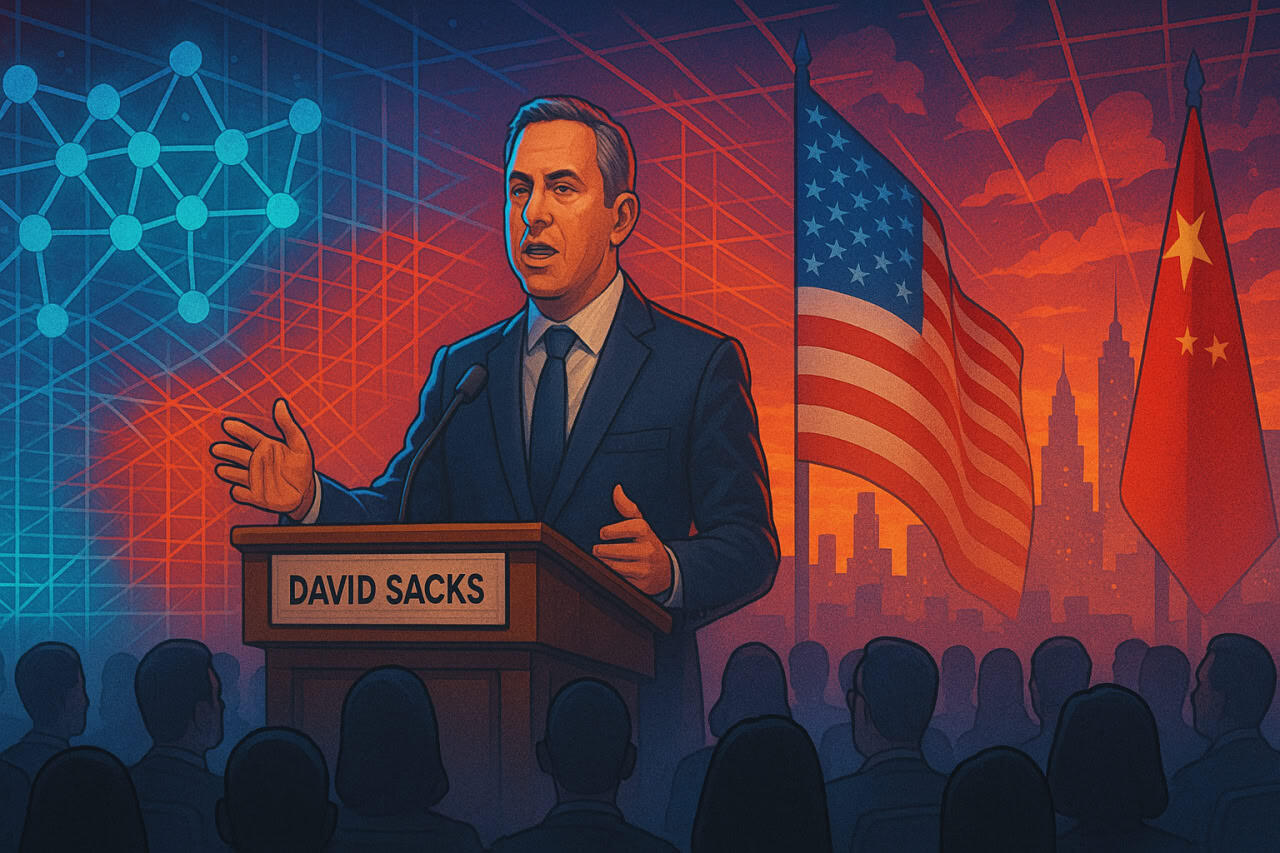How Europe Can Forge Its Own Tech Titans: Overcoming US Dominance and Building Digital Sovereignty

In an era where digital platforms shape everything from daily communications to global economies, Europe finds itself at a crossroads. While American behemoths like Google, Amazon, and Meta command the continent’s tech landscape, and Chinese players like Tencent lurk in the shadows, the European Union lags behind in producing its own homegrown giants. This isn’t just a matter of national pride—it’s about economic security, data privacy, and strategic autonomy. As the world races toward an AI-driven future, can Europe reverse course and cultivate tech powerhouses capable of rivaling Silicon Valley? The answer lies in untangling the complex web of regulations, market barriers, and cultural hurdles that have held the region back, while leveraging bold new initiatives to propel it forward.
The Stark Reality: Foreign Tech’s Grip on Europe
Europe’s tech ecosystem tells a tale of dependency. Take search engines, for instance. Over 90% of the market in Europe is controlled by American firms, with Google alone holding a staggering 90.22% share as of mid-2025. This dominance isn’t new; it’s the result of years of aggressive expansion and network effects that make switching to alternatives feel futile. Local players like Ecosia, the Berlin-based engine that funnels profits into tree-planting initiatives, scrape by with less than 2% of the pie. Ecosia’s eco-friendly angle is admirable, but it highlights Europe’s niche focus rather than broad-scale disruption.
The story repeats in cloud infrastructure, the backbone of modern digital life. Every streamed video, social scroll, or website load relies on vast data centers, yet roughly 70% of Europe’s internet traffic flows through servers owned by U.S. giants like Amazon Web Services (AWS), Microsoft Azure, and Google Cloud. European providers, such as Germany’s SAP, Deutsche Telekom, and France’s OVHcloud, manage just 15% of the market. This imbalance isn’t merely technical—it’s geopolitical. When data resides on foreign soil, so does control over it, raising concerns about surveillance and sovereignty. As one industry analyst noted, “Europe’s cloud market is a battleground where regional players fight for scraps while U.S. firms feast on the lion’s share.”
Social media amplifies this disparity. Platforms like Facebook, Instagram, YouTube, and X (formerly Twitter) dominate with about 75% U.S. ownership, while China’s TikTok claims much of the rest. Europe’s share? A paltry less than 1%, confined to fringe apps like Germany’s Mastodon or the UK’s Vero. These platforms offer privacy-focused alternatives, but they lack the viral appeal and ad revenue to scale globally. The implications are profound: cultural narratives, political discourse, and even elections are influenced by algorithms tuned in California or Beijing.
Then there’s artificial intelligence, the crown jewel of modern tech. Large language models like ChatGPT, Gemini, and Microsoft Copilot command over 93% of the European market. Europe’s entrants, such as France’s Mistral AI, show promise but capture under 1% of users. Mistral’s open-source approach has garnered buzz, yet it struggles against the marketing muscle and data troves of U.S. rivals. The Europe AI market, valued at USD 66.4 billion in 2024, is projected to grow at a 33.2% CAGR through 2030, but much of that expansion benefits foreign firms.
Hardware underscores the gap. Advanced chips for AI and autonomous systems are manufactured by Taiwan’s TSMC, South Korea’s Samsung, and U.S.-based Intel—no EU players at the 5-nanometer cutting edge. Design is similarly U.S.-heavy, with NVIDIA and AMD leading. Europe’s absence here isn’t total, though; Dutch firm ASML monopolizes extreme ultraviolet (EUV) lithography machines essential for chip production. Without ASML’s tech, the global AI boom grinds to a halt. This niche dominance offers a blueprint: Europe excels in specialized, high-value engineering.
These statistics paint a picture of vulnerability. As U.S. tech firms cozy up to political shifts—like embracing a potential Trump resurgence—Europeans increasingly seek “digital sovereignty.” Interest in EU-based services has surged, per data from Similarweb, signaling a growing appetite for independence.
Europe’s Quiet Strengths: Homegrown Innovators Rising
Amid the gloom, Europe boasts underappreciated assets. Beyond ASML’s pivotal role in semiconductors, companies like SAP—Europe’s largest software firm by market cap—provide enterprise solutions to global giants. OVHcloud challenges AWS with eco-conscious data centers, emphasizing energy efficiency in a climate-aware era.
Startups are bubbling up too. In 2025, Viva Technology highlighted 100 rising European ventures, including Germany’s Quantum Systems (robotics for defense and surveying), Rabot Energy (sustainable energy tech), and Retraced (supply chain transparency). Bloomberg’s list of 25 startups to watch features breakthroughs in generative AI, space, and autonomous vehicles. Ukraine’s Grammarly, now a unicorn in writing assistance, exemplifies Eastern Europe’s grit, while Germany’s IONITY leads in EV charging networks.
France’s Mistral AI stands out in the AI arena, partnering with Microsoft yet retaining European roots. Its models prioritize efficiency and ethics, aligning with EU values. Similarly, the UK’s Dojo advances payment tech, and Netherlands’ SkyNRG pioneers sustainable aviation fuels. These firms demonstrate Europe’s knack for innovation in sustainability, privacy, and niche markets—areas where U.S. giants often falter due to profit-driven shortcuts.
Historically, Europe’s tech prowess traces back to post-WWII collaborations, but it diverged from the U.S. path. While DARPA fueled American breakthroughs, Europe focused on collaborative research via CERN and ESA. Today, this foundation supports quantum computing initiatives, where firms like Germany’s IQM and France’s Pasqal compete globally. Experts like Mark Minevich argue Europe can dominate in ethical AI if it leverages its talent pool.
Yet, scaling remains the challenge. Many startups relocate to the U.S. for funding, perpetuating brain drain. As one VC noted, “Europe’s tech is worth 30% of a single Big Four U.S. firm— we need to change that narrative.”
Regulation: Protector or Stifler of Innovation?
Europe’s response to tech dominance has been regulatory muscle. The 2018 General Data Protection Regulation (GDPR) set a global standard for privacy, mandating user consent and imposing fines up to 4% of global revenue. It empowered citizens but burdened businesses.
Subsequent laws amplified this. The 2024 Digital Markets Act (DMA) curbs gatekeepers like Google and Apple from self-preferencing, fostering competition. The Digital Services Act (DSA) demands transparency on algorithms and combats disinformation. In 2025, the AI Act introduces risk-based rules, banning high-risk uses like biometric surveillance while promoting ethics.
These measures protect users—GDPR alone has led to billions in fines—but they’ve sparked debate. Studies show GDPR reduced profits for large IT firms by 4.6%, but small ones suffered a 12% drop due to compliance costs. Big Tech adapts with legal armies; startups drown in red tape. As the International Center for Law & Economics warns, these rules may have unintended consequences, stifling Europe’s own innovators.
Critics view EU actions as a “de facto tariff” on U.S. firms, but they risk alienating investors. A 2025 push for “simplification” aims to ease burdens on SMEs, but concerns linger that it could dilute protections. Balancing regulation with growth is key; as one Brussels insider put it, “We’re regulating Big Tech out of existence here, but not building our own.”
On X, discussions echo this tension. Users debate EU tech sovereignty, with posts highlighting the need for a “high-trust, tech-savvy coalition” in Northern Europe to counter fragmentation.
Unpacking the Roots of Europe’s Tech Deficit
Why has Europe fallen behind? The causes are multifaceted, blending policy, structure, and mindset.
First, regulation’s irony: Intended to tame giants, it often hampers locals. GDPR’s compliance demands divert startup resources from innovation to paperwork. Europe’s “Brussels Effect” shapes global standards but deters entrepreneurs wary of bureaucracy.
Market fragmentation compounds this. With 27 countries, diverse languages, taxes, and laws, scaling is arduous. No unified “European Silicon Valley” exists—Berlin and Paris thrive, but lack California’s synergy. This drives brain drain: Tech migration rose 15% since 2019, lured by U.S. salaries and opportunities.
Funding gaps are glaring. U.S. startups raised $139 billion in 2024, triple Europe’s $45-52 billion. Europe’s VC is shallower, favoring low-risk bets over moonshots. Unlike U.S. government engines like DARPA, Europe lacks equivalent large-scale innovation funding.
Culturally, risk-aversion prevails. Over 50% of Europeans view business failure as shameful, versus 27% in the U.S. This stifles entrepreneurship; failure in America is a resume booster, in Europe, a scar.
Historical context matters. Post-1990s, U.S. tech boomed via deregulation and venture capital, while Europe prioritized stability amid integration challenges. Today, as AI reshapes industries, these factors risk widening the gap.
EU Counteroffensives: Policies to Spark a Tech Renaissance
The EU isn’t idle. The Chips Act, a €43 billion initiative, funds research, design, and factories to double Europe’s global chip share to 20% by 2030. It addresses supply chain vulnerabilities exposed by pandemics and geopolitics, incentivizing public-private partnerships. Critics call it a patchwork, but it’s a step toward autonomy.
The Capital Markets Union (CMU) seeks to unify fragmented finances, easing cross-border fundraising. By harmonizing rules, it could mirror U.S. ease in scaling startups.
Scale-Up Europe and Choose Europe pour billions into unicorns, offering funding and mentorship to retain talent. Programs like Project Europe foster founders building “from Europe, for Europe.”
These efforts align with broader goals. The digital euro, a CBDC, protects monetary sovereignty amid U.S. stablecoin pushes. On X, experts tout it as a bulwark against foreign dominance.
Private Powerhouses: Grassroots Drives for Sovereignty
Private initiatives complement public ones. EuroStack envisions a fully European digital stack—from cloud to AI—based on open standards and sovereignty.
Gaia-X, a federated cloud project uniting companies and governments, promotes data control and interoperability. Launched in 2021 as a non-profit, it enables neutral ecosystems. However, some critique it as underdelivering, a “failure foretold” due to slow progress.
These efforts signal a shift. As one observer noted, “Europe’s path to tech giants lies in collaboration, not imitation.”
Charting the Future: Strategies for European Tech Ascendancy
To build titans, Europe must act decisively. Deregulate smartly: Streamline GDPR for startups while maintaining core protections. Accelerate CMU to unlock capital flows.
Combat brain drain with incentives—tax breaks for returnees, dual-citizenship perks. Cultivate risk-taking via education reforms emphasizing entrepreneurship.
Invest in AI ethically: Public AI Act support could nurture firms like Mistral without fueling U.S. dominance.
Foster hubs: Designate “tech corridors” linking Berlin, Paris, and Stockholm.
The payoff? Economic resilience, job creation, and influence. As the World Economic Forum suggests, bold reforms could bridge the innovation gap.
In conclusion, Europe’s tech journey isn’t doomed—it’s evolving. By addressing root causes and amplifying strengths, the continent can birth giants that prioritize people over profits. The question isn’t if Europe can compete, but how swiftly it will seize the moment. Failure to act risks perpetual dependency; success promises a digitally sovereign future.




Купить новогодние украшения для дома в Москве легко через интернет магазин. Такой способ оформления дома создает уникальную атмосферу праздника.
[url=https://novogodnij-dekor.ru/]Новогодние украшения для дома интернет магазин[/url]
Вы сможете найти множество разнообразных украшений, начиная от светящихся гирлянд и заканчивая оригинальными игрушками для елки. Это позволяет легко выбрать именно то, что вам нужно для вашего дома.
Онлайн-магазины часто проводят распродажи, на которых можно приобрести новогодние украшения по более низким ценам. Так вы сможете сэкономить средства, приобретая желаемые украшения.
Удобство интернет-шопинга заключается также в возможности доставки товаров прямо к вашему дому. Вы можете заказать любимые украшения, не тратя времени на поездки по магазинам.